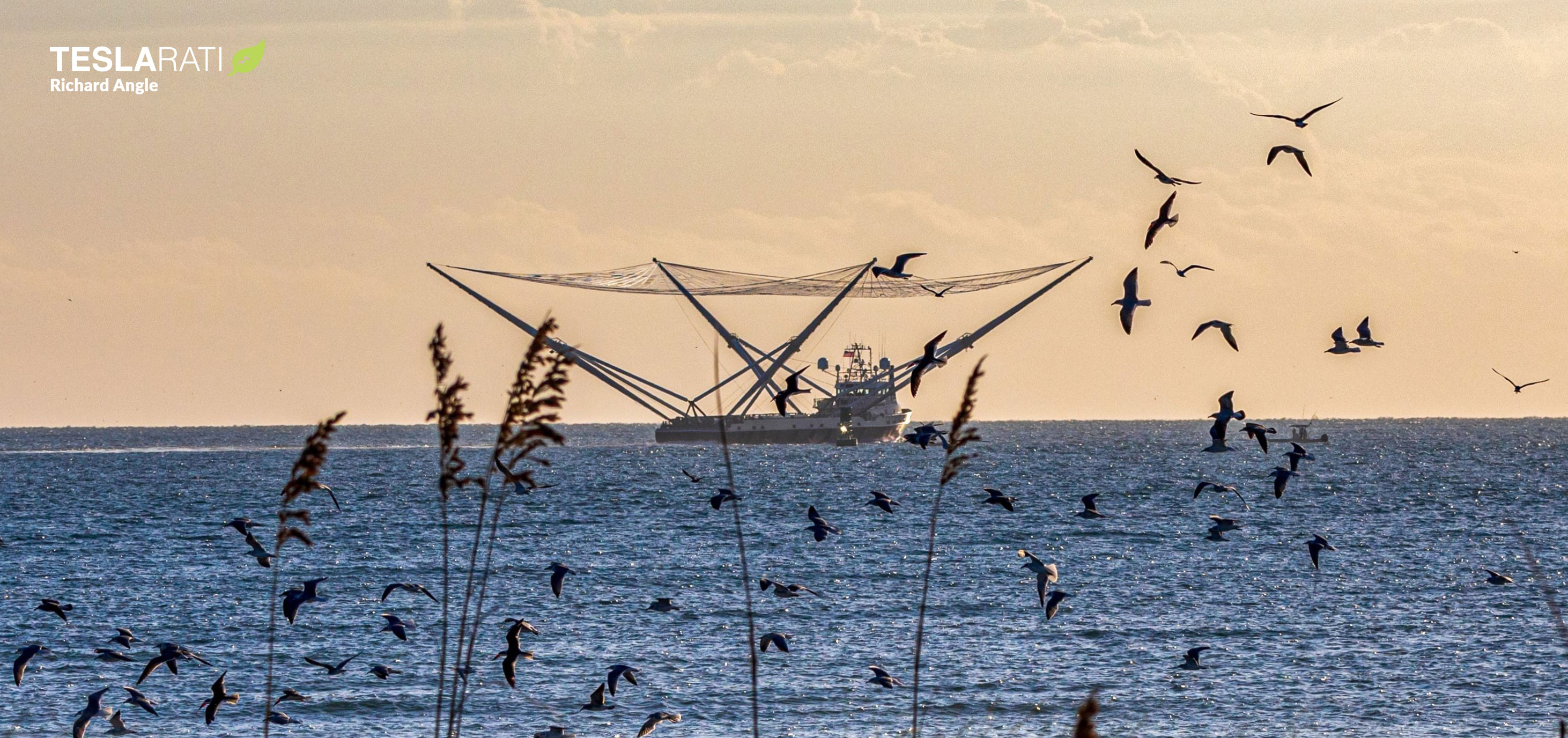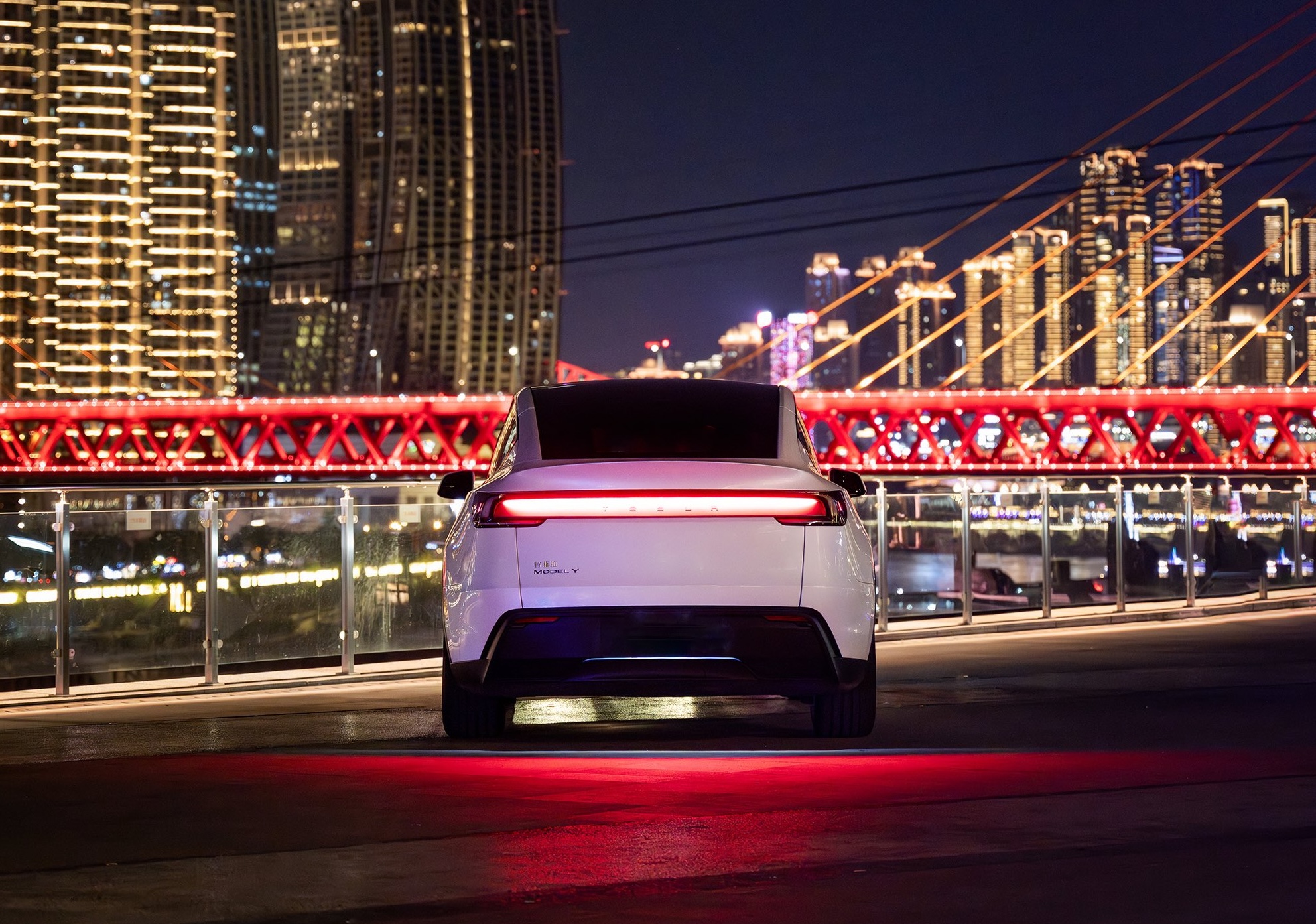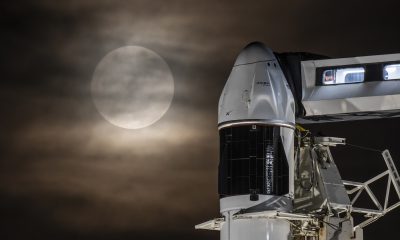

News
SpaceX’s new Falcon 9 fairing recovery ship kicks off sea trials ahead of next launch
After a brief installation period, SpaceX’s second Falcon 9 fairing-catching ship departed Port Canaveral to begin sea trials with its new net and arms, a critical step before it can be declared ready to attempt its first fairing recovery.
Known as GO Ms. Chief, the ship’s first opportunity could come as early as a few weeks from now, potentially marking a major milestone for SpaceX’s fairing recovery and reuse program.
On his first shoot for Teslarati, photographer Richard Angle (@RDAnglePhoto) managed to capture Ms. Chief while departing Port Canaveral on October 23rd, heading a few miles off the coast to kick off sea trials likely focused on proving out a wide range of new hardware installed in the last month. Those trials began less than 24 hours after technicians installed Ms. Chief’s recovery net for the first time ever, with the ship’s subsequent trip into the Atlantic Ocean essentially marking the completion of her transformation from fast supply vessel (FSV) to SpaceX fairing catcher.
SpaceX is currently in the midst of its longest lull in launch activity since September 2016, likely triggered by the unavailability of customer payloads and the company’s own internal Starlink missions. Unfortunately, although the lull was initially expected to end as early as mid-October, the internal Starlink launch (Starlink-1) expected to lead the charge slipped about a month for unknown reasons and is now expected no earlier than November – likely in the second half of the month.
As a small consolation, Starlink-1’s launch delays mean that the newly-outfitted Ms. Chief may be able to inaugurate its new net and arms by attempting to recover one of the mission’s Falcon 9 fairing halves, while the nearly identical GO Ms. Tree attempts to snag the other half. Even if more tweaking and sea trials are needed to prove her readiness, SpaceX’s next launch is still likely several weeks away, hopefully giving the company’s recovery team plenty of time to prepare Ms. Chief and practice recovery operations.
As of October 2019, SpaceX has successfully caught two Falcon fairing halves during the company’s last two back-to-back recovery attempts, beginning with a Falcon Heavy fairing half caught on June 25th and ending with a Falcon 9 fairing half caught on August 7th. Beyond Ms. Tree’s two catches, SpaceX has successfully recovered a number of additional fairing halves after they performed soft landings in the Atlantic Ocean, including both halves launched in May 2019 for the company’s first dedicated Starlink mission.
Given that SpaceX has technically caught two halves of a payload fairing, it’s possible that one is female and the other male, potentially meaning that one of SpaceX’s upcoming Starlink launches could feature the first fully-reused Falcon 9 fairing. Regardless, assuming one or both were recovered in good condition, it’s even more likely that at least one half (with the other half new) will be reused on one (or both) of those upcoming flights.
Said by CEO Elon Musk to make up approximately 10% of the cost of a new Falcon 9 (~$6M), routine fairing recovery and reuse would close the last remaining loop for Falcon 9 reusability, with boosters and fairings accounting for roughly 75-80% of the total cost of the rocket. SpaceX has no plans to attempt to recover or reuse Falcon 9’s second stage, choosing instead to prioritize development of the fully-reusable Starship launch vehicle.
Preparing the oven-cured carbon composite shells that make up the bulk of SpaceX’s Falcon fairings takes a disproportionate amount of time and factory floor space. Even if Falcon fairings can only be reused once or twice, it would effectively double or triple the effectiveness of the current manufacturing apparatus, cutting the relative cost of production by 50% or more for the price of operating Ms. Tree and Ms. Chief.
Fairing reuse will be a critical part of ensuring that the first phase of SpaceX’s Starlink constellation can be launched as affordably as possible on Falcon 9. With at least 24 launches needed to cover most populated areas, cutting even a few million dollars per launch could produce savings on the order of $100M, equivalent to the production cost of 100-200 Starlink satellites.
Check out Teslarati’s Marketplace! We offer Tesla accessories, including for the Tesla Cybertruck and Tesla Model 3.
News
Tesla China breaks 8-month slump by selling 71,599 vehicles wholesale in June
Tesla China’s June numbers were released by the China Passenger Car Association (CPCA) on Tuesday.

Tesla China was able to sell 71,599 vehicles wholesale in June 2025, reversing eight consecutive months of year-over-year declines. The figure marks a 0.83% increase from the 71,599 vehicles sold wholesale in June 2024 and a 16.1% jump compared to the 61,662 vehicles sold wholesale in May.
Tesla China’s June numbers were released by the China Passenger Car Association (CPCA) on Tuesday.
Tesla China’s June results in focus
Tesla produces both the Model 3 and Model Y at its Shanghai Gigafactory, which serves as the company’s primary vehicle export hub. Earlier this year, Tesla initiated a changeover for its best-selling vehicle, the Model Y, resulting in a drop in vehicle sales during the first and second quarters.
Tesla’s second-quarter China sales totaled 191,720 units including exports. While these numbers represent a 6.8% year-over-year decline for Tesla China, Q2 did show sequential improvement, rising about 11% from Q1 2025, as noted in a CNEV Post report.
For the first half of the year, Tesla sold 364,474 vehicles wholesale. This represents a 14.6% drop compared to the 426,623 units sold wholesale in the first half of 2024.
China’s competitive local EV market
Tesla’s position in China is notable, especially as the new Model Y is gaining ground in the country’s BEV segment. That being said, Tesla is also facing competition from impressive local brands such as Xiaomi, whose new YU7 electric SUV is larger and more affordable than the Model Y.
The momentum of the YU7 is impressive, as the vehicle was able to secure 200,000 firm orders within three minutes and over 240,000 locked-in orders within 18 hours. Xiaomi’s previous model, the SU7 electric sedan, which is aimed at the Tesla Model 3, also remains popular, with June deliveries surpassing 25,000 units for the ninth straight month.
While China’s EV market is getting more competitive, Tesla’s new Model Y is also ramping its production and deliveries. Needless to say, Tesla China’s results for the remaining two quarters of 2025 will be very interesting.
Elon Musk
Tesla reveals it is using AI to make factories more sustainable: here’s how
Tesla is using AI in its Gigafactory Nevada factory to improve HVAC efficiency.

Tesla has revealed in its Extended Impact Report for 2024 that it is using Artificial Intelligence (AI) to enable its factories to be more sustainable. One example it used was its achievement of managing “the majority of the HVAC infrastructure at Gigafactory Nevada is now AI-controlled” last year.
In a commitment to becoming more efficient and making its production as eco-friendly as possible, Tesla has been working for years to find solutions to reduce energy consumption in its factories.
For example, in 2023, Tesla implemented optimization controls in the plastics and paint shops located at Gigafactory Texas, which increased the efficiency of natural gas consumption. Tesla plans to phase out natural gas use across its factories eventually, but for now, it prioritizes work to reduce emissions from that energy source specifically.
It also uses Hygrometric Control Logic for Air Handling Units at Giafactory Berlin, resulting in 17,000 MWh in energy savings each year. At Gigafactory Nevada, Tesla saves 9.5 GWh of energy through the use of N-Methylpyrrolidone refineries when extracting critical raw material.
Perhaps the most interesting way Tesla is conserving energy is through the use of AI at Gigafactory Nevada, as it describes its use of AI to reduce energy demand:
“In 2023, AI Control for HVAC was expanded from Nevada and Texas to now include our Berlin-Brandenburg and Fremont factories. AI Control policy enables HVAC systems within each factory to work together to process sensor data, model factory dynamics, and apply control actions that safely minimize the energy required to support production. In 2024, this system achieved two milestones: the majority of HVAC infrastructure at Gigafactory Nevada is now AI-controlled, reducing fan and thermal energy demand; and the AI algorithm was extended to manage entire chiller plants, creating a closed-loop control system that optimizes both chilled water consumption and the energy required for its generation, all while maintaining factory conditions.”
Tesla utilizes AI Control “primarily on systems that heat or cool critical factory production spaces and equipment.” AI Control communicates with the preexisting standard control logic of each system, and any issues can be resolved by quickly reverting back to standard control. There were none in 2024.
Tesla says that it is utilizing AI to drive impact at its factories, and it has proven to be a valuable tool in reducing energy consumption at one of its facilities.
Elon Musk
Tesla analysts believe Musk and Trump feud will pass
Tesla CEO Elon Musk and U.S. President Donald Trump’s feud shall pass, several bulls say.

Tesla analysts are breaking down the current feud between CEO Elon Musk and U.S. President Donald Trump, as the two continue to disagree on the “Big Beautiful Bill” and its impact on the country’s national debt.
Musk, who headed the Department of Government Efficiency (DOGE) under the Trump Administration, left his post in May. Soon thereafter, he and President Trump entered a very public and verbal disagreement, where things turned sour. They reconciled to an extent, and things seemed to be in the past.
However, the second disagreement between the two started on Monday, as Musk continued to push back on the “Big Beautiful Bill” that the Trump administration is attempting to sign into law. It would, by Musk’s estimation, increase spending and reverse the work DOGE did to trim the deficit.
Every member of Congress who campaigned on reducing government spending and then immediately voted for the biggest debt increase in history should hang their head in shame!
And they will lose their primary next year if it is the last thing I do on this Earth.
— Elon Musk (@elonmusk) June 30, 2025
President Trump has hinted that DOGE could be “the monster” that “eats Elon,” threatening to end the subsidies that SpaceX and Tesla receive. Musk has not been opposed to ending government subsidies for companies, including his own, as long as they are all abolished.
How Tesla could benefit from the ‘Big Beautiful Bill’ that axes EV subsidies
Despite this contentious back-and-forth between the two, analysts are sharing their opinions now, and a few of the more bullish Tesla observers are convinced that this feud will pass, Trump and Musk will resolve their differences as they have before, and things will return to normal.
ARK Invest’s Cathie Wood said this morning that the feud between Musk and Trump is another example of “this too shall pass:”
BREAKING: CATHIE WOOD SAYS — ELON AND TRUMP FEUD “WILL PASS” 👀 $TSLA
She remains bullish ! pic.twitter.com/w5rW2gfCkx
— TheSonOfWalkley (@TheSonOfWalkley) July 1, 2025
Additionally, Wedbush’s Dan Ives, in a note to investors this morning, said that the situation “will settle:”
“We believe this situation will settle and at the end of the day Musk needs Trump and Trump needs Musk given the AI Arms Race going on between the US and China. The jabs between Musk and Trump will continue as the Budget rolls through Congress but Tesla investors want Musk to focus on driving Tesla and stop this political angle…which has turned into a life of its own in a roller coaster ride since the November elections.”
Tesla shares are down about 5 percent at 3:10 p.m. on the East Coast.
-

 Elon Musk2 days ago
Elon Musk2 days agoTesla investors will be shocked by Jim Cramer’s latest assessment
-

 News7 days ago
News7 days agoTesla Robotaxi’s biggest challenge seems to be this one thing
-

 News2 weeks ago
News2 weeks agoTesla’s Grok integration will be more realistic with this cool feature
-

 Elon Musk2 weeks ago
Elon Musk2 weeks agoElon Musk slams Bloomberg’s shocking xAI cash burn claims
-

 News2 weeks ago
News2 weeks agoTesla China roars back with highest vehicle registrations this Q2 so far
-

 News2 weeks ago
News2 weeks agoTexas lawmakers urge Tesla to delay Austin robotaxi launch to September
-

 News2 weeks ago
News2 weeks agoTesla dominates Cars.com’s Made in America Index with clean sweep
-

 Elon Musk1 week ago
Elon Musk1 week agoFirst Look at Tesla’s Robotaxi App: features, design, and more




















